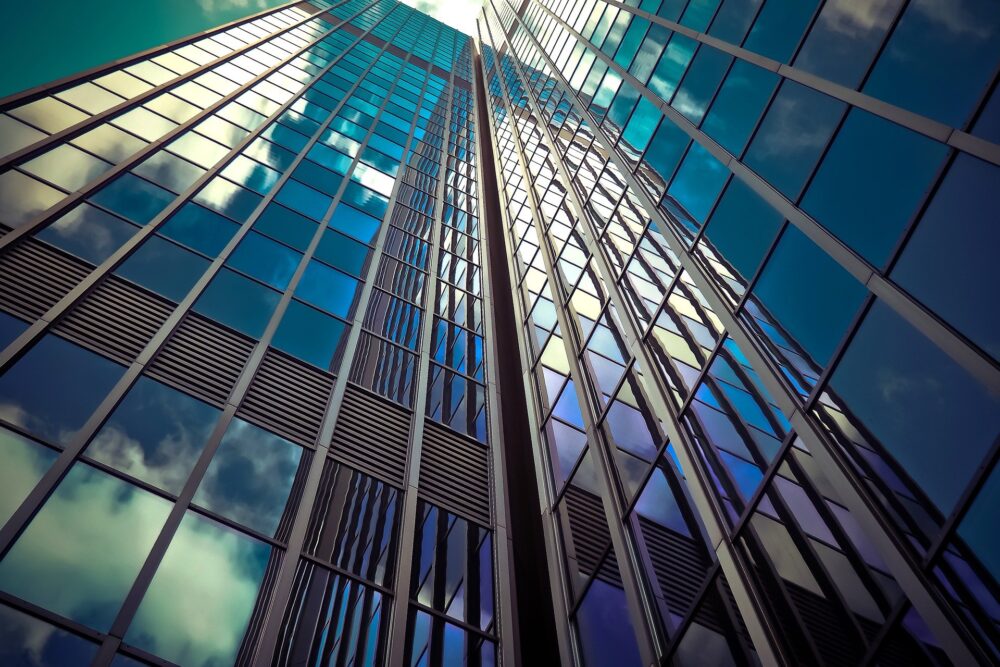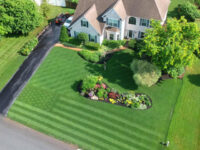While cities cover only 2 percent of the Earth’s land area, they house upwards of 55 percent of the world’s population and account for a whopping 70 percent of greenhouse gas emissions. It is estimated that nearly 70 percent of the population will live in cities by 2050 and bring with them a hefty carbon footprint. While architects, engineers, and planners race to keep up with the ever expanding urban development in a sustainable way, the answer may be in the buildings themselves.
Green buildings aim to minimize energy usage, water usage, greenhouse gas emissions, and site disturbances like displacing wildlife and polluting water and air, and they can improve the mental and physical health of the occupants. To be a certified green building, the United States Green Building Council (USGBC) must recognize and grant a LEED certification based on a point system awarded from the start of construction to the final design. Some methods of a green building may include high-efficiency light fixtures, passive heat and light optimization, water conservation techniques, tight building envelopes to reduce heat loss, and environmentally friendly or recycled building materials.
David Fannon, associate professor and advisor for the MS in Sustainable Building Systems at Northeastern, suggests a four-step process for designing sustainable buildings. He “starts by reducing the demand for energy.” An example of this is optimizing sunlight to rely less on artificial lighting. Once energy needs are determined, Fannon “meets those loads passively to whatever extent is possible, and uses efficient machines and equipment when it is not.” If there is a need for cooling, window placement could provide cross ventilation. The final step of Fannon’s method is to “power those machines with renewable sources.”
A tight envelope reducing unwanted heat loss and heat gains might “eliminate or reduce the size of mechanical equipment, perhaps yielding first cost savings on HVAC, as well as operating savings from energy and maintenance for the life of the building,” states Fannon.
Making these changes can go a long way in reducing the building’s environmental impact. A study from the Department of Energy reviewed 22 LEED-certified buildings and found they averaged 34 percent lower carbon emissions, 25 percent less energy usage, and 11 percent less water usage compared to a typical building. In addition to building function, the USGBC reports that LEED projects have collectively diverted more than 80 million tons of waste from the landfill. These energy savings translate into a 19 percent reduction in operating costs, meaning that they can be a long term investment.
While green buildings are becoming the status quo, many developers shy away because of their seemingly daunting costs, but many solutions actually save money. A tight envelope reducing unwanted heat loss and heat gains might “eliminate or reduce the size of mechanical equipment, perhaps yielding first cost savings on HVAC, as well as operating savings from energy and maintenance for the life of the building,” states Fannon. This is just one of the numerous examples of how a green building can be, well, green!
Green buildings also have numerous benefits for occupants’ health. Air quality is one of the pillars for a green building. According to a study from the American Public Health Association, improved air quality can improve cognitive function and reduce absenteeism due to airborne diseases, asthma, allergies, and stress.
In a 2016 study from Harvard University and Syracuse University, scientists observed the productivity of analytical information workers (e.g., architects and engineers) while blindly changing the indoor air quality measured by air changes per hour, level of volatile organic compounds, and level of carbon dioxide. They found that higher air quality led to better decision making along with improved preparation and strategy during a crisis. They also tested people who worked in LEED certified and traditional buildings and found that the former performed better across the board.
Green buildings not only serve their occupants, but they are a way to “protect the health, safety, and welfare of the public,” says Fannon.
Biophilic design is often used in green buildings and responds to humans’ need to connect with the outdoors by incorporating natural elements like plants, natural materials, natural light, water, and sounds into buildings. A 2015 study found that workers who are exposed to greenery in the workspace report a 15 percent increase in well-being, 6 percent increase in productivity, and 15 percent increase in creativity. Other benefits include a decrease in stress, more oxygen, fewer airborne toxins, and less artificial light.
As cities expand with a growing population, concern for carbon emissions is of utmost importance. Green buildings not only serve their occupants, but they are a way to “protect the health, safety, and welfare of the public,” says Fannon. Development is inevitable, and green buildings can pave the way for a sustainable future. So next time you see the LEED certified symbol on a new building, stop to smell the fresh air!
Environmental Health Perspectives (2016). DOI: 10.1289/ehp.1510037
American Public Health Association (2010). DOI: 10.2105/AJPH.2009.180687





